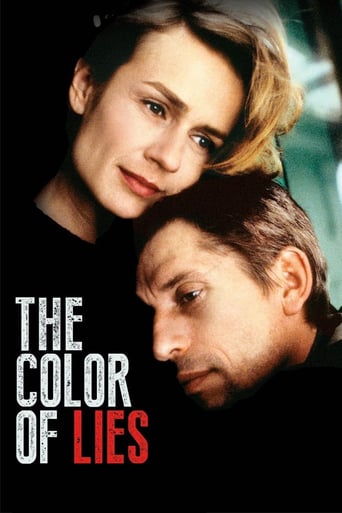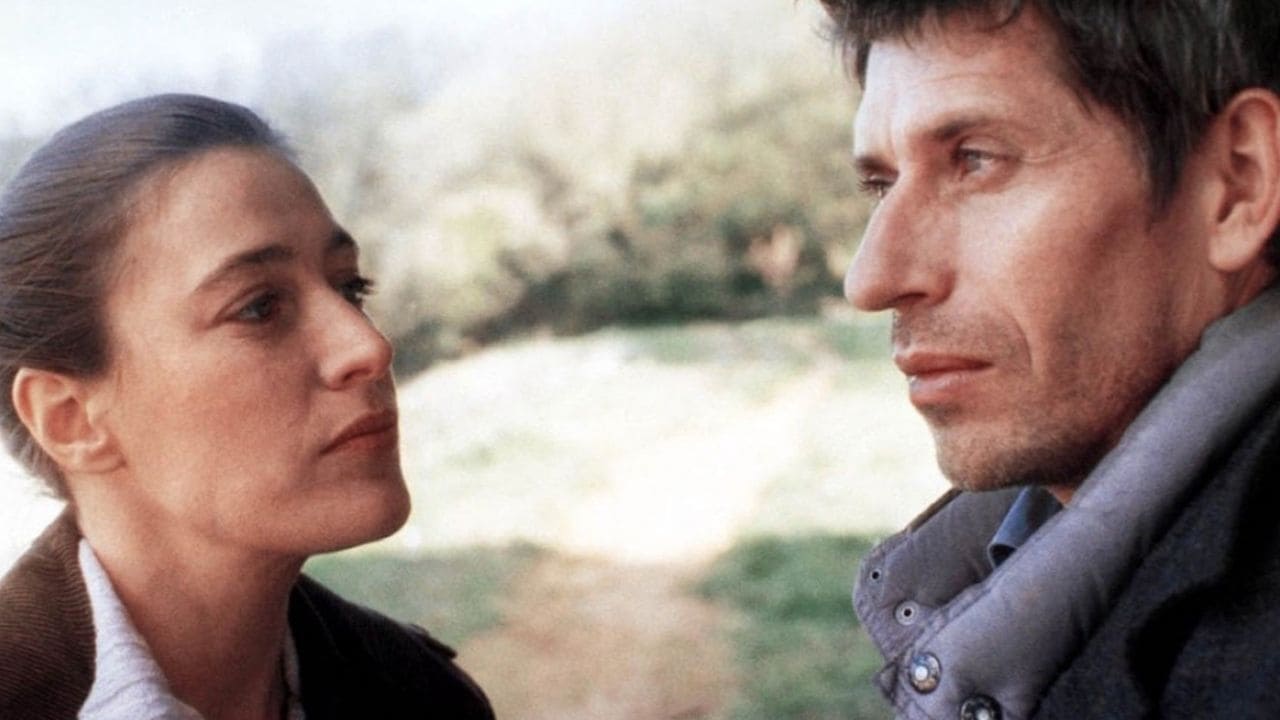robert-temple-1
This is a typical Claude Chabrol study of the intricacies of human deception, betrayal, failures of self and of others. It weaves a wide web of intrigue, and who is the murderer is a question which almost drowns in the mire of human weaknesses which Chabrol's relentless scalpel peels away, layer by layer, in his surgical manner. The film, set on the coast of Britanny, is brilliantly directed, as usual. And the actors in this ensemble film are all superb, also as usual. Probably the outstanding performance is by Jacques Gamblin as the limping artist suffering from a prolonged case of painter's block. His wife is sturdy Sandrine Bonnaire, a district nurse. Her performance is excellent, as usual, but the makeup person overdid her eyebrows far too much! Ever since his serious accident some years before, he has experienced a collapse of morale, and she keeps him going and also brings home the bacon. Meanwhile, she is flirty with an odious, arrogant man who is a visitor to their town, with whom she then commences an affair. Where would a Chabrol film be without an affair? Who killed the young girl? Who is sleeping with whom? Who has the hard heart of a killer and who merely seems to? Will the Gamblin and Bonnaire marriage crack up, or will it survive? Chabrol has his usual fun mystifying us, perplexing us, teasing us, depressing us, and putting us in our place. His main purpose often seems to be to prove to us, with almost mathematical precision, that we are all in the grip of an incomprehensible Fate, that there is murder around every corner or behind every bush, that no alliance or marriage is safe, that betrayal lurks in every heart, that we all have terrible secrets (and if we don't, what's wrong with us?) which will devour us from within, and that every situation is so complex we need to be able to solve partial differential equations for non-linearities even to begin to figure out anything at all. And even then we will still be lost and wandering in a maze of extra dimensions! The amazing Jacques Gamblin of this film appears in Chabrol's last film before his death in 2010, INSPECTOR BELLAMY (2009, see my review), where he plays three characters at once. But Gamblin's performance here is even better than those.
gridoon2018
"The Color Of Lies" is a whodunit, Chabrol-style: by limiting the number of suspects (who matter) to a minimum and basically focusing on the central character and one burning question - did he or didn't he? - Chabrol gives us plenty of time (some might say too much) to contemplate the implications of each possible answer: either an ordinary everyman is hiding a monstrous, inhuman killer inside, or a chronically unlucky, innocent man gets unfairly stigmatized by rumors and small-town-talk. For me the answer, when it finally comes, was quite a well-hidden surprise, but Chabrol adds another last-minute twist that does not really hold up; conclusive film endings are not his forte. On the other hand, making his films look and sound great IS his forte, and this one is no exception. There is something admirable about the way he sticks to his own measured, methodical style even at the turn of the millennium. Sandrine Bonnaire is wonderful, but Valeria Bruni Tedeschi seems both too young and too soft-voiced for her role as a police Inspector, though she gives it her best shot. **1/2 out of 4.
Didier (Didier-Becu)
I never was a big fan from Claude Chabrol who said himself that for him movies have to be like stones. Chabrol is the master in so called psychological dramas and the problem with them is that the departing idea is interesting but that it never goes any further than an ordinary teleplay, and that's the same here. It's the story from some scandal in Bretagne. In a forest a child is found dead and as soon as the police arrives they accuse the man with whom the child was with the last time. The whole town is shocked and points a finger at an innocent man. The idea was inspired by Belgium's most famous crimestory, Marc Dutroux, a man (or monster?) who is accused for having kidnapped and murdered some children. A decade later the trial still hasn't started and the big question is of course : is he the one that has to behind bars? But good Chabrol doesn't even try to explain us such things, he just films everything in a cold docustyle and it's so slow you tend to watch your clock till it will end...
alice liddell
Although Claude Chabrol has worked predominantly in the crime genre, and adapted much mystery fiction, very few of his films are straight whodunits. Crimes may be the central feature of these films, or the catalyst at least, and investigations may shape these narratives and bring them to their conclusion, if not resolution. But Chabrol is usually more interested in focusing on point-of-view, of the killer, the victims, the suspects, the community, than in any who's-the-killer games. So 'Au coeur du mensonge' belongs to a relatively marginalised (and recent) position in Chabrol's filmography; its most famous predecessors are 'Cop au vin' and 'Inspecteur Lavardin' (although there are important echoes of earlier Chabrol classics like 'Que le bete meure' and 'Le Boucher').However, just because we don't know who committed the two murders until the end, this doesn't mean Chabrol is only interested in artifical games. The limits of the whodunit paradoxically give Chabrol the freedom from delineating the psychology of the criminal, to something much more interesting to him; in other words, the unknowability of other people, especially those we love, live with and think we know best.
Chabrol's films are so self-contained and remote, that it's rare to find him concentrating on 'topical' issues. Here the subject is the all-too-familiar paedophile rape and murder of a young girl in the woods. She was last seen at a lesson with her art teacher, Rene, and suspicion immediately falls on him, in one of those oppressive small towns where the Internet will never outpace malicious gossip. If we didn't know whodunits, we might think so too - he is lame, shifty looking, whiny, and a failed artist experiencing mental breakdown who thinks his masseuse wife, Vivianne, is having an affair with a slick media personality, G.R.There are other suspects: G.R. himself, his criminal go-between, and Rene's friend, Regis, even, as the coroner cheerfully suggests, a woman with strong hands and gloves - an exact description of Vivianne earlier. But it is Rene everyone suspects, especially the new Chief Inspector, Lesage, whose personal stake in the case (she has a daughter of the same age as the dead girl) makes her determined to bring him to justice.'Mensonge' is a psychological study in the guise of a mystery thriller. We are asked to follow Rene's reactions to the murder, social ostracism, artistic failure etc., and yet we're not told whether he's the murderer or not, or any of the other characters, which would surely be a crucial element in anyone's psychology! so these two impulses - towards psychological truth and towards a mystery story which necessarily precludes the audience having any access to the character's psychology, puts it with the same level of knowledge of characters as the other characters, making for an effectively tense film, which, beyond its mystery trappings, asks whether we can ever know anyone, when trust, or self-confidence, or faith in 'reality' is gone.
The film links the idea of lies (characters concealing truths, making realities out of lies), with art (painting - Jacques revels in panoramas and trompes d'oeil; the second murder is 'composed' like a painting). Throughout, various media for the diffusion of truth - painting, TV, books, recitals - as well as the police investigation, with its need for artistic resolution, are highlighted, interrogated and undermined (even a last minute confession is suspect, and the denouement, appropriately, takes place in a deep mist). Chabrol's blithely elliptical narrative style further compounds our uncertainty. As with every Chabrol, the surface every character sees, or creates, is as treacherous as a trompe d'oeil. As the child-murder in the forest, echoing 'Diary of a Chambermaid', suggests, Chabrol is letting out the closet Surrealist in him.


 AD
AD


